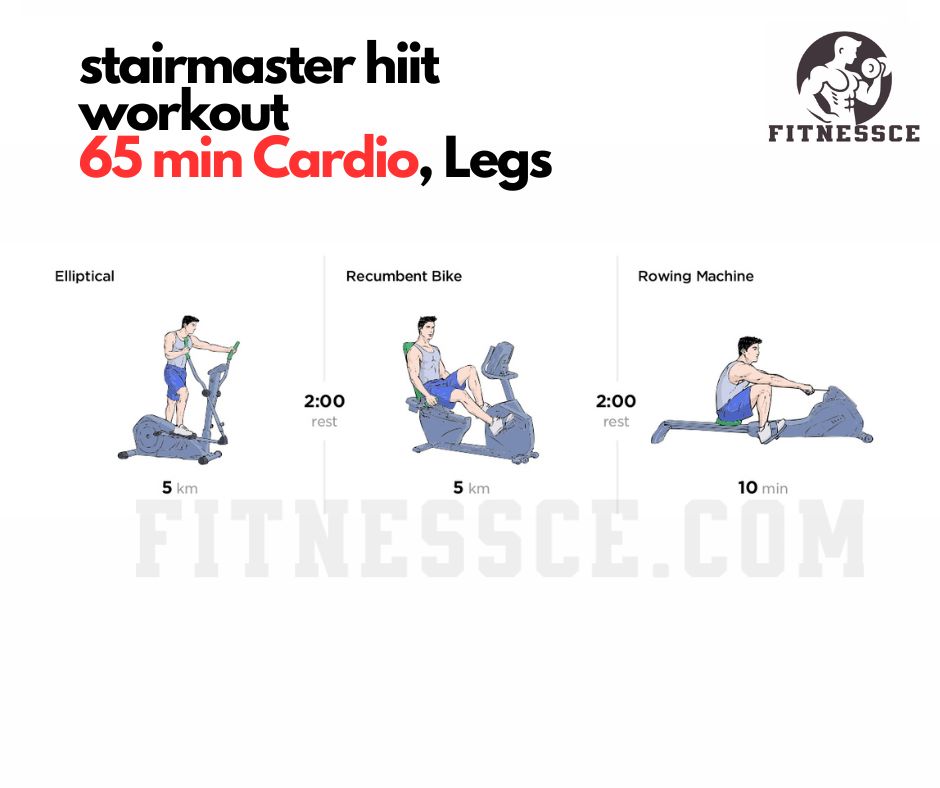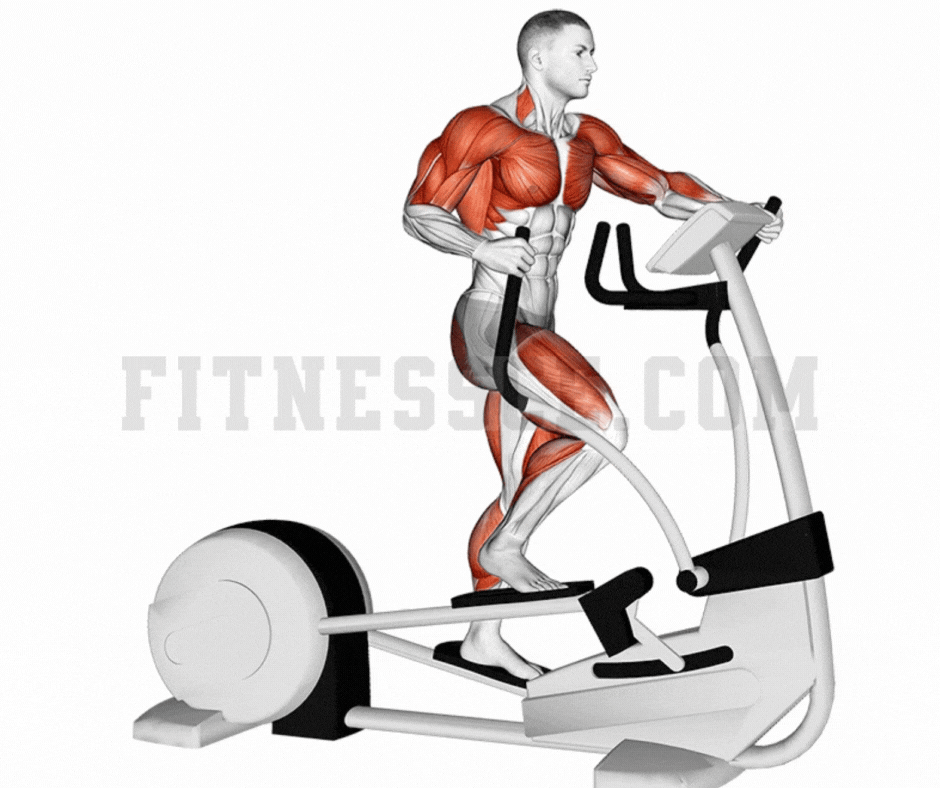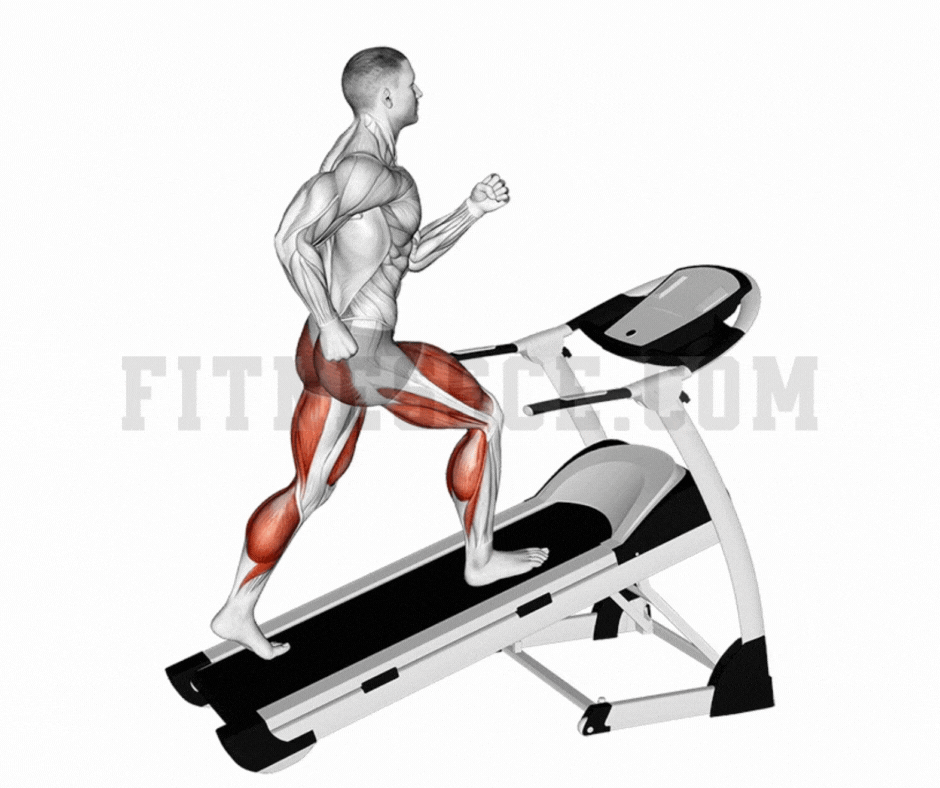In the same volume of time, high-intensity interval training (HIIT) can burn up to 30% more calories than conventional steady-state cardio. Elliptical HIIT exercises can be just what you need if you’re bored with the same old fitness program and want to optimize workout efficiency without aggravating your joints.
Though sometimes disregarded in favour of treadmills or spin bikes, the elliptical machine provides the ideal foundation for HIIT exercise. Combining the low-impact elliptical with the proven fat-burning power of interval training produces a joint-friendly and quite powerful exercise.
From knowing the fundamentals to honing advanced methods, this book will equip you with all you need to safely and successfully include elliptical HIIT exercises into your exercise program.
Table of Contents
You will learn in this extensive guide:
• What HIIT is and why it’s so effective
• The specific benefits of doing HIIT on an elliptical
• Step-by-step instructions for getting started
• Beginner, intermediate, and advanced workout routines
• Creative variations to keep your workouts challenging
• Safety tips and common mistakes to avoid
• How can you evaluate your development?
High-intensity interval training, or HIIT, is a fitness plan in which short bursts of intensive exercise alternate with shorter recuperation times. Unlike conventional cardio, HIIT challenges you to work at near-maximum effort for brief intervals and then periods of active recuperation instead of keeping a consistent pace throughout your workout.
The Science Driving HIIT’s Effectiveness
The secret of HIIT is something called EPOC, sometimes known as the “afterburn effect.” Excess Post-exercise Oxygen Consumption During those high-intensity intervals, pushing your body to its limits generates an oxygen debt your body must pay back during recovery. This process uses energy. Hence, you keep burning calories even after your exercise finishes—often for up to 24 hours!
Compared to steady-state exercise, HIIT dramatically lowered total body fat, subcutaneous leg and trunk fat, and insulin resistance, according to studies written in the Journal of Obesity. The greatest thing is that these outcomes came from substantially less overall exercise.
HIIT Not Designed for Only Elite Athletes
One widespread myth regarding HIIT is that it’s only appropriate for advanced fitness aficioners. Actually, HIIT may be adjusted to almost any degree of fitness. Working at your highest intensity during the work intervals—which may vary for each person—is the secret. HIIT can be changed to push you suitably, regardless of your level of expertise or ability.
Advantages of elliptical high-intensity interval training
Cardiovascular Disease
By raising the heart rate during demanding intervals and letting it recover during rest times, regular elliptical HIIT sessions can greatly enhance heart health. More so than steady-state cardio, this kind of training has been demonstrated to raise VO2 max—your body’s capacity to use oxygen during exercise.
Calorie Burn and Weight Loss
Less time but 25–30% more calories burned via HIIT on an elliptical than from a conventional steady-state workout. In a 30-minute elliptical HIIT session, a 155-pound person might burn roughly 300–400 calories; in steady-state elliptical training, the calorie count is just 270–320. The afterburn effect also keeps your metabolism high for several hours.
Little Impact
Unlike plyometric or sprinting drills, elliptical workouts have little impact on your joints. Your feet never leave the pedals, avoiding the impact that happens when your foot strikes the ground. For people with joint problems or anyone trying to minimize body wear and tear, elliptical HIIT is a great choice.
Whole-Body Exercise
Moveable handlebars on most elliptical machines engage your upper body while your legs work the pedals. This simultaneous upper and lower body movement produces a complete exercise aiming at several muscle groups, including quads, hamstrings, glutes, chest, back, and arms.

Enhanced Endurance and Stamina
HIIT’s varied intensity tests your cardiovascular system in ways that steady-state cardio cannot, which, over time, increases stamina. Activities that once left you tired will become easier as your body adjusts to these obstacles.
Time Proficiency
Finding time for fitness in our hectic schedules can be difficult. Time efficiency is one of the main benefits of elliptical HIIT—you can get a good workout in as little as twenty to thirty minutes. This helps you to keep consistency in your workout, even with a hectic schedule.
Psychological Advancements
Generally speaking, exercise releases endorphins that improve mood; nevertheless, HIIT, in particular, may intensify these benefits. While the sense of accomplishment following a demanding workout can boost self-confidence and lower stress levels, the targeted intensity needed during work intervals can produce a meditative state that helps clear your mind.
Starting Elliptical HIIT with a Step-by-Step Guide
Prepare Your Elliptical
Modern elliptical machines have several tools to personalize your workout:
• Resistance: Affects the force with which you should press the pedals. More muscular engagement and a more demanding exercise follow from greater resistance.
• inclination: Some ellipticals let you modify the inclination, therefore altering the motion path of the pedals and working different muscle areas.
Many machines have built-in HIIT programs, but you may always design your own intervals by hand.
To position the elliptical correctly:
On high-intensity intervals, change the resistance to a level that feels demanding but sustainable.
If your machine has an inclination function, start at a moderate level—about 5–7—then modify as necessary.
For the best power transfer and joint alignment, centre your feet on the pedals.
Correct Form and Posture
Safety and efficacy depend on the right form, thus:
• Upright posture: Keep your spine neutral, shoulders relaxed and down, and avoid leaning on the handlebars.
• Core engagement: To help your lower back, gently activate your abdominal muscles all during the exercise.
• Arm motion: Rather than allowing the moving handlebars to travel passively, push and pull with purpose.
• Full foot contact: Press through your whole foot instead of only your heels or toes.
Typical mistakes to avoid:
Hunching over or leaning hard on the console and gripping the handlebars too tightly could strain your shoulders and neck.
• Rather than keeping complete contact with the pedals, let your feet come up on the toes or heels.
Growing Up
Before any HIIT training, a good warm-up helps your muscles and cardiovascular system get ready for the demanding activity ahead. Starting at a comfortable rate with little resistance, spend five to ten minutes on the elliptical, and progressively increase your speed and resistance toward the end of the warm-up.
Relaxing Cooling
Helping your heart rate progressively return to normal and avoiding blood pooling in the extremities depend on equally critical cooling down. Spend five to ten minutes progressively slowing down your pace and resistance after your last interval until you are moving at a quite easy effort. Following this, gently stretch your main muscle groups for 20 to 30 seconds apiece.
Elliptical HIIT Workout Routines
Beginner Elliptical HIIT Workout:
| Phase | Duration | Intensity | Notes |
| Warm-up | 5 minutes | Light effort (3-4 out of 10) | Focus on proper form and posture |
| Interval 1 | 30 seconds | High intensity (7-8 out of 10) | Increased pace, moderate resistance |
| Recovery 1 | 60 seconds | Low intensity (4-5 out of 10) | Maintain movement, catch your breath |
| Repeat | Intervals 2-8 | Same pattern as above | Complete 8 total intervals |
| Cool-down | 5 minutes | Gradually decreasing effort | Slow to a comfortable pace |
Total workout time: 23 minutes
For beginners, focus on maintaining proper form throughout the workout. If 30 seconds of high intensity feels too challenging, start with 20 seconds instead and gradually build up. Keep resistance at a low to moderate level, and focus on increasing your pace during the high-intensity intervals.
Intermediate Elliptical HIIT Workout
| Phase | Duration | Intensity | Notes |
| Warm-up | 5 minutes | Light to moderate effort | Gradually increase pace and resistance |
| Interval 1 | 45 seconds | High intensity (8-9 out of 10) | Increase both pace and resistance |
| Recovery 1 | 45 seconds | Low intensity (4-5 out of 10) | Active recovery, keep moving |
| Repeat | Intervals 2-10 | Same pattern as above | Complete 10 total intervals |
| Cool-down | 5 minutes | Gradually decreasing effort | Reduce pace and resistance progressively |
Total workout time: 25 minutes
At the intermediate level, you can increase both the duration and intensity of your work intervals. Try varying the resistance and incline throughout the workout—for example, do odd-numbered intervals with higher resistance and even-numbered intervals with higher incline.
Advanced Elliptical HIIT Workout
| Phase | Duration | Intensity | Notes |
| Warm-up | 5 minutes | Progressive effort | End warm-up near workout intensity |
| Interval 1 | 60 seconds | Maximum effort (9-10 out of 10) | Push your limits with high resistance/speed |
| Recovery 1 | 30 seconds | Low intensity (4-5 out of 10) | Brief but active recovery |
| Repeat | Intervals 2-12 | Same pattern as above | Complete 12 total intervals |
| Cool-down | 5 minutes | Gradually decreasing effort | Slowly reduce to resting levels |
Total workout time: 28 minutes
Longer work intervals, shorter recovery times, and more total intervals in this program intensify the challenge for expert exercisers. Emphasize keeping high intensity all through the working intervals; your last interval should be exactly as strong as your first.
Try the Tabata alternative—20 seconds of maximal exertion followed by just 10 seconds of recuperation, repeated for 8 cycles (4 minutes total)—for a more difficult challenge. After a few rounds of the regular advanced workout, this can be done as a finisher or as a stand-alone workout.
Customizing Your Exercise Program:
The freedom of elliptical HIIT adds to its appeal. Here’s how you might customize your workouts:
• Adjust intensity: Modify resistance, incline, and/or speed dependent on your fitness level
• Change interval timing: Shorter, more intense intervals (like 20 seconds work/40 seconds rest) or longer intervals (like 2 minutes work/1 minute rest) offer distinct training stimulus
• Frequency: Start with 2-3 HIIT workouts each week, leaving at least 48 hours between sessions for recuperation
• Progressive overload: As your fitness advances, progressively raise intensity, length, or number of intervals.
Customizing requires, most importantly, paying attention to your physique. You might have to trim back some days and feel able to push harder on others. Honour these swings and modify your behaviour to avoid overtraining.
Elliptical HIIT Variations and Challenges

Incline Variations
Increasing the incline on your elliptical shifts muscle emphasis to your posterior chain (glutes and hamstrings) while decreasing it targets more of your quadriceps. Try this incline ladder in your next workout:
- Intervals 1-2: Low incline (levels 1-3)
- Intervals 3-4: Medium incline (levels 4-7)
- Intervals 5-6: High incline (levels 8-10)
- Intervals 7-8: Medium incline (levels 4-7)
- Intervals 9-10: Low incline (levels 1-3)
Variations in resistance
Resistance can be changed to target various energy systems and muscle regions, much as in hill climbing:
- Low light resistance/fast speed: More cardiovascular emphasis, more calorie burning
- Strong resistance/moderate speed: More strength growth and muscular endurance
- Variations in Arm: During high-intensity intervals, push harder with your arms; alternately stress push and pull motions; advanced option: let go of grips during recovery intervals and do arm circles or other arm exercises.
Backwards Walking
Backward pedalling works your muscles differently and emphasizes your quadriceps. For a complete lower body workout, try varying forward and backwards pedalling every other interval.
Variations in Interval Structures
Change the interval structures in your workouts to keep them interesting
Pyramid Intervals:
- 30 seconds work/30 seconds rest
- 45 seconds work/45 seconds rest
- 60 seconds work/60 seconds rest
- 90 seconds work/90 seconds rest
- 60 seconds work/60 seconds rest
- 45 seconds work/45 seconds rest
- 30 seconds work/30 seconds rest
30-20-10 Intervals: Repeat this pattern 5 times:
- 30 seconds at moderate intensity (6/10)
- 20 seconds at high intensity (8/10)
- 10 seconds at maximum effort (10/10)
Safety Tips and Precautions:
If you have any pre-existing illnesses, are over 40, or have been inactive, see a healthcare provider before beginning your elliptical HIIT sessions to guarantee they are both safe and effective.
• Never skip warm-up and cool-down periods since they prepare your body for intensity and help with recovery.
• Before, during, and after your workout, stay hydrated. Keep a water bottle handy.
• Keep good form all through your exercise, even in high-intensity intervals when form often deteriorates.
• Pay attention to your body and separate possible damage from useful suffering. An indication to cease is sharp, unexpected pain.
• Give enough recuperation time to separate HIIT sessions. 48–72 hours between high-intensity exercises of the same muscle groups usually help most people.
• Advance slowly instead of aiming for sharp changes in intensity or length of time.
“Your aim should be to challenge rather than push your boundaries. Consistent challenge and enough rest build true fitness. — fitness specialist
Elliptical HIIT’s advantages over other forms of HIIT: elliptical vs. treadmill
Reduced strain on joints; whole body workout possibilities with arm involvement; lower chance of injury; easier to rapidly modify resistance
Advantages of the treadmill:
Stronger directly relate to running performance; perhaps higher calorie burn at similar perceived effort may develop stronger functional strength for daily tasks.
Elliptical HIIT versus Cycling HIIT

Elliptical advantages:
• The standing posture more efficiently uses the core.
• More different activity patterns available;
• Upper body engagement for a more complete workout
Riding benefits:
Better for those with specific balance problems; more specific lower body muscle targeting; easier to attain very high-intensity sprints
HIIT elliptical vs. bodyweight
Elliptical Benefits
• Less impact option; easier to keep constant intensity
• Cardiovascular emphasis with aspects of strength
Advantages of body weight:
There is no equipment required; instead, there is more strength development, more variety of movement patterns, and more practical functional fitness carryover.
When would you want to start elliptical HIIT?
When you’re recovering from an injury but want to keep fit, elliptical HIIT is perfect; joint protection is a top concern; you want a full-body cardio option; you prefer machine-based workouts with easily measured metrics; you’re new to HIIT and want a controlled environment to learn intensity management.
Monitoring Your Development and Evaluating Your Performance
Monitoring Heart Rates
For elliptical HIIT classes, a heart rate monitor can be quite helpful. Aim for 80 to 95% of your maximal heart rate for high-intensity intervals—roughly computed as 220 less your age. Try to get back to 60–70% of your maximal heart rate during recovery intervals.
Many ellipticals feature built-in heart rate sensors, although usually more precise readings come from a chest strap or wrist-based monitor.Performance Indices for MonitoringTrack with a fitness app or an exercise diary.Resistance levels are used throughout intervals, during high-intensity intervals, total workout time, and perceived effort (on a 1-10 scale).


















